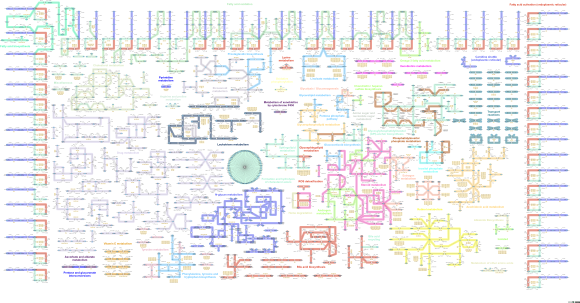The interaction section - Explore protein and metabolic interaction networks
The Interaction section presents data on interaction networks based on protein-protein interactions from the IntAct database and metabolic pathways from the Metabolic Atlas. More information about the specific content and the generation of the data in this section can be found in the Methods summary.
Learn about:
- the interactions of a protein with other proteins
- features of the protein-protein interaction networks
- what pathways/subsystems a metabolic gene is part of
- which genes are nearby in the metabolic network
- how the expression of the genes in a pathway/subsystem varies across different tissues
|
METABOLIC MAPS - Explore the enzymes involved in human metabolism
|
The Metabolic maps enables exploration of protein function and tissue-specific gene expression in the context of the most curated human metabolic network. For proteins involved in metabolism, a metabolic summary is provided that describes the metabolic subsystems/pathways, cellular compartments, and number of reactions associated with the protein. Over 120 manually curated metabolic pathway maps facilitate the visualization of each protein's participation in different metabolic processes. Each pathway map is accompanied by a heatmap detailing the mRNA levels across 256 different tissue types for all proteins involved in the metabolic pathway.
More information about the human metabolic network, including how it was generated and what information it provides, can be found in the Methods summary.
Maps are organized by individual pathways to facilitate visualization of metabolic areas of interest. Further details and full cellular compartment maps are available at metabolicatlas.org. |
Metabolic subsystem
|
Histidine metabolism
HAL
|
Pentose phosphate pathway
RBKS
|
Cellular compartment

|
Table 1. A complete list of the pathways details in the Metabolic Atlas and number of enzymes involved in each pathway.